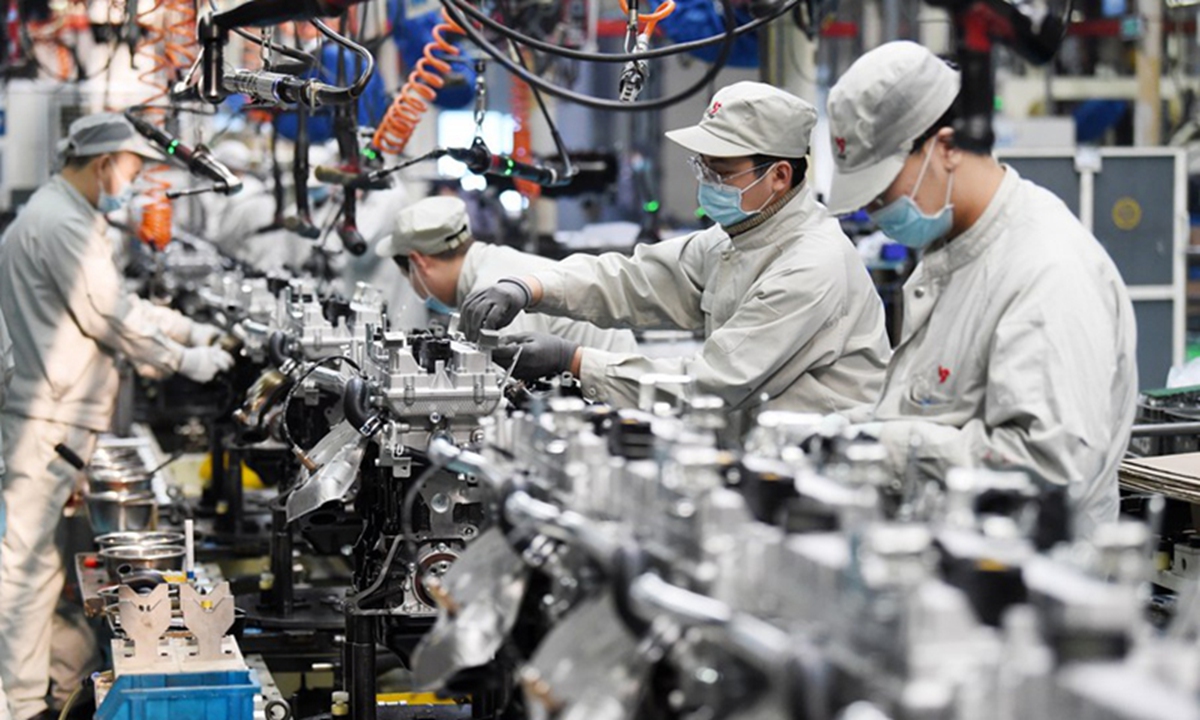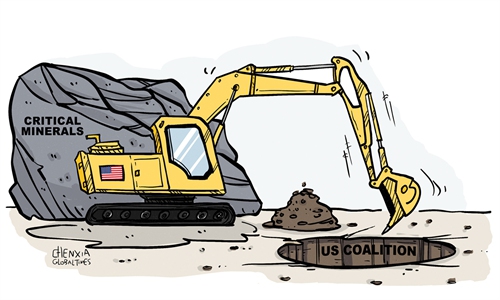
Photo: Xinhua
While the US-led efforts to "decouple" from China have often spurred lots of speculation about a manufacturing shift from China and potential challenges facing China's exports and its economy, it is rarely noticed how China's restructuring of the trade chains has offset shocks brought about by US curbs.As the world trade data began to show early signs of "reorganization" or tectonic shifts in the global trading system, Vietnam, Mexico and India are among the beneficiaries as China has lost a portion of its share of total US imports to other economies amid the geopolitical tensions between Washington and Beijing, according to a Bloomberg report published over the weekend.
There may be quite a lot trade data pointing to the trend of a gradual "decoupling" between the world's two largest economies, which may further fuel some Western political talk of reducing the so-called reliance on China. In the first three months of 2023, US-China trade in goods declined 13.1 percent year-on-year, and Chinese exports to the US decreased 17 percent compared with the same period last year, according to data from China's General Administration of Customs.
Also, while the China-US trade hit a record high of $690.6 billion in 2022, the proportion of bilateral trade to the US' total trade was down to 13.08 percent, from 16.34 percent in 2017.
But the decline in direct trade between China and the US cannot reflect the full picture of changes taking place across China's trade network. At a time when the US is trying to shift some manufacturing orders to ASEAN, India and Latin American countries, it should be noted that Chinese exports to those developing countries are also booming as they are actually assembling Chinese components and exporting finished products to the US.
Customs data showed that China's trade with ASEAN, Latin American and African markets grew by 16.1 percent, 11.7 percent and 14.1 percent year-on-year in the first quarter of this year, with the proportion of the combined trade to China's total trade up by 2.4 percentage points to 28.4 percent.
Even the recently concluded 133rd China Import and Export Fair, commonly known as the Canton Fair, reflected the increasing vitality in China's trade in intermediate products, reflecting early signs of China's restructuring of trade chains to extend to emerging markets. At present, China's trade in intermediate goods accounts for more than two-thirds of its trade with other 14 members of the Regional Comprehensive Economic Partnership (RCEP). In the first three months of this year, China's exports of intermediate products to ASEAN totaled 531 billion yuan ($76.77 billion), up 17.9 percent compared with the same period last year.
Despite the fact that US' tariffs and its "decoupling" push have indeed put on pressure and constituted challenges for Chinese exports, the large-scale manufacturing capability of China, a global trading power, remains resilient. The industrial transfer or the loss of foreign orders to Southeast Asia or to any other emerging markets hasn't weakened China's true strength in manufacturing.
Even if the US has spared no effort in pursuing its "decoupling" strategy, moving some low-end manufacturing capacity out of China, it is beyond the US control or efforts as to where those emerging markets procure their upstream raw materials, equipment or intermediate goods, which are mostly dependent on Chinese supplies. Such kind of re-division of industrial chains or re-export is actually a market-driven choice under the influence of Chinese companies' own advantages.
Indeed, the Chinese efforts to expand and extend trade chains to emerging markets in Asia, Latin America and Africa is also an important directional adjustment for Chinese manufacturing and Chinese brands to further expand their presence in the global markets.
Chinese manufacturers' ability to adapt in the face of a US crackdown also explains why the US won't succeed in using trade barriers to curb Chinese exports to the US. In the end, China's extended industrial chains will make US "decoupling" push futile.



